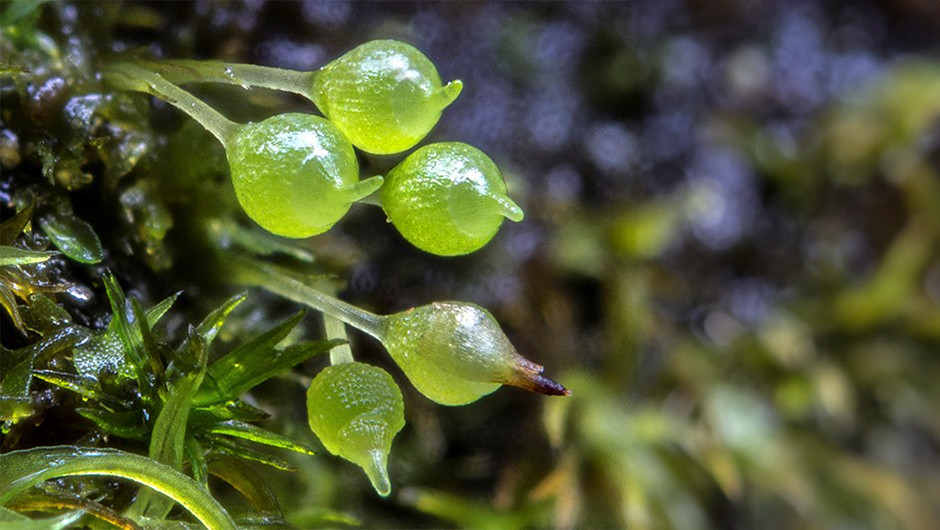Forskningsområden: Botanik
Forskningsämnen: Taxonomi & artbeskrivning, Mossor & lavar, Växtfysiologi, Rödlistan
Project overview
Project period: Ongoing
Participating departments from the museum: Department of Botany
The earth is facing a major biodiversity crisis. About one million species are expected of going extinct before the end of the century. More than 80% of the estimated nine million species of fungi, plants, and animals on Earth still awaits to be described.
Inconspicuous organisms receive less attention than eye-catching species, in terms of funding, human resources, and public interest, though they are exposed to the same ongoing anthropogenic pressures.
We investigate how we can advance methods to assess extinction risks and improve conservation of bryophytes. Bryophytes, with cirka 20,000 species known globally, are small and poorly studies plants, while they play crucial roles for the function and stability of many ecosystems.
Project description
Speeding up conservation
We follow several approaches to achieve an improved bryophyte conservation, and they build on the engagement and species knowledge of both scientists, conservation agencies and amateur experts. Different persons lead the various sub-projects.
IUCN Red List assessments give objective data on the extinction risk of species but are time-consuming and do not provide sufficient information on conservation actions. One of the current focuses builds on the “European Red List of Mosses, Liverwort and Hornworts”.
Based on distribution, habitat and threat data, climate variables and species’ ecological and biological traits, we model the extinction risk of 1,800 bryophytes of Europe, using machine learning techniques. Further, we use a quantitative method to identity those red-listed species that warrant highest conservation priority in Europe, to use the limited resources and capacities most efficiently.
- We attempt to delineate European areas of special significance for bryophyte diversity, based on the distribution of red-listed and endemic bryophytes and habitat characteristics.
- We also work on the potential effects of invasive bryophytes.
- Finally, we plan a symposium to highlight state-of-the art approaches that can accelerate the documentation of bryophyte diversity on a range of scales and facilitate conservation actions, especially in these and other poorly known organisms.
Funding
- Mohamed bin Zayed Species Conservation Fund
 External link.
External link. - WSL
 External link. Internal Competetive Grants
External link. Internal Competetive Grants - Federal Office for the Environment
 External link. FOEN
External link. FOEN - International Association of Bryologists
 External link.
External link. - EU LIFE programme
 External link. for the European Red List of Bryophytes
External link. for the European Red List of Bryophytes External link. (LIFE14 PRE BE 001)
External link. (LIFE14 PRE BE 001)
Selected publications
- Van Zuijlen, K., Bisang, I., Nobis, M. P. & Bergamini, A. (2023). Bryophytes of Europe Traits (BET) dataset: a fundamental tool for bryological studies. Journal of Vegetation Science, e13179. doi:10.1111/jvs.13179
- Bisang, I., Lienhard, L. & Bergamini, A. 2021. Three decades of field surveys reveal a decline of the arable bryophyte flora in the Swiss lowlands despite agri-environment schemes. Agriculture, Ecosystems & Environment 313, 107325. doi.org/10.1016/j.agee.2021.107325
- Bisang, I. & Hedenäs, L. (2022). Agricultural management, bedrock, and vulnerability of sexual reproduction to climate change affect the occurrence of a European near-endemic moss. Bryophyte Diversity and Evolution 45 (1), pp. 176–187. doi: 10.11646/bde.45.1.11
See Research Gate External link. for more of Irene Bisang’s publications
External link. for more of Irene Bisang’s publications
Project participants
As co-chair of the IUCN SSC Bryophyte Specialist Group External link., Irene Bisang is involved in and supporting various projects that focus on regional redlisting, conservation efforts or conservation method development across the globe.
External link., Irene Bisang is involved in and supporting various projects that focus on regional redlisting, conservation efforts or conservation method development across the globe.
External participants
For two of the sub-projects described above is Ariel Bergamini, or ECCB, respecitive, the PI.
- Kristel Van Zuijlen; Ariel Bergamini
 External link., Michael Nobis
External link., Michael Nobis External link. at Swiss Federal Institute for Forest, Snow and Landscape Research (WSL
External link. at Swiss Federal Institute for Forest, Snow and Landscape Research (WSL External link.), Switzerland
External link.), Switzerland - IUCN SSC Bryophyte Specialist Group
 External link.
External link. - European Committee for Conservation of Bryophytes (ECCB; web site under construction)
- Jonathon Winnel & Kristoffer Hylander
 External link., Department of Ecology, Environment and Plant Sciences. Stockholm university, Sweden
External link., Department of Ecology, Environment and Plant Sciences. Stockholm university, Sweden - Link
 External link. to Hodgetts et al, 2019: A miniature world in decline – European Red List of Mosses, Liverworts and Hornworts.
External link. to Hodgetts et al, 2019: A miniature world in decline – European Red List of Mosses, Liverworts and Hornworts.
Project manager


